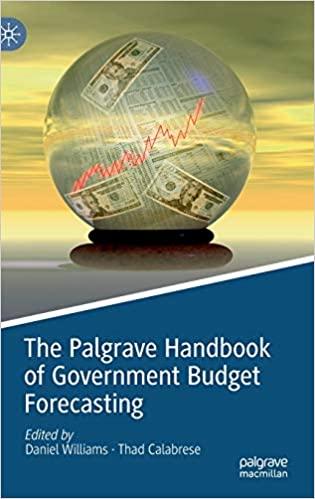Question
I just need Q8 Answer. 1) Consider a zero-coupon bond with a face value of $100, a time-to-maturity of one year and a price of
I just need Q8 Answer.
1) Consider a zero-coupon bond with a face value of $100, a time-to-maturity of one year and a price of $90.09. What is its yield-to-maturity? 2) Consider a coupon bond with a face value of $100, a coupon rate of 25%, a time-to-maturity of two years and a price of $121.97. What is its yield-to- maturity? Hint: Use the quadtraic formula 3) Consider a coupon bond with a face value of $100, a coupon rate of 10%, a time-to-maturity of three years and a price of $119.80. What is its yield-to- maturity? Hint: Solve numerically using a scientific calculator or Excel 4) Consider a coupon bond with a face value of $100, a coupon rate of 20%, a time-to-maturity of three years and a yield-to-maturity of 4% (implying a price of $144.40). a. What would be the holding period return on buying the bond today and selling it in one years time if interest rates in one years time are such that the bonds yield-to-maturity is still 4%? b. What would be the holding period return on buying the bond today and selling it in one years time if interest rates in one years time are such that the bonds yield-to-maturity is 5%? c. What would be the holding period return on buying the bond today and selling it in one years time if interest rates in one years time are such that the bonds yield-to-maturity is 3%? d. Can you think of any reason why the change in holding period return is not symmetric even though the change in yield-to-maturity is, i.e. it is changing by one percent in both question b and c compared to question a (although in different directions)? 5) Suppose that there is a bank that is offering to lend and/or borrow money at an interest rate of 8% (regardless of the time-to-maturity of the loan). Further suppose that there is a two-year coupon bond trading with a face value of $100 and a coupon rate of 5% trading in the market. Price the bond using an explicit no-arbitrage argument. 1
6) Suppose that the bond in the previous question is actually trading for $92. Show how you could exploit the mispricing to make an arbitrage profit. 7) Suppose that the bank from the previous questin is still around. Consider a gold mine that will produce annual cash flows of $100 (with certainty) for five years starting in two years, i.e. from t = 2 to t = 6. What is the arbitrage-free price of the gold mine? 8) Now suppose that the cash flows from the mine in the previous question are risky with a standard deviation of = $50. How would your answer change?
Step by Step Solution
There are 3 Steps involved in it
Step: 1

Get Instant Access to Expert-Tailored Solutions
See step-by-step solutions with expert insights and AI powered tools for academic success
Step: 2

Step: 3

Ace Your Homework with AI
Get the answers you need in no time with our AI-driven, step-by-step assistance
Get Started


